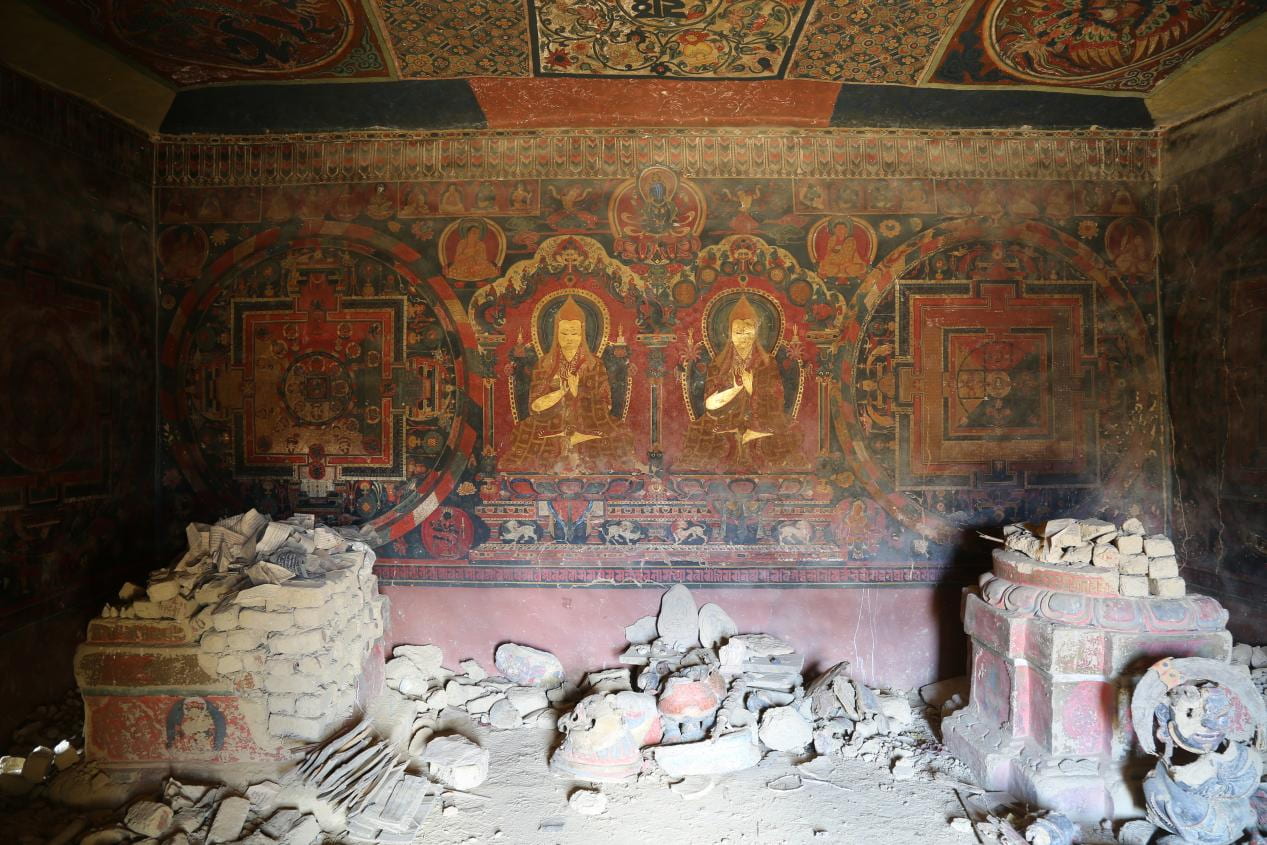We cordially invite you to join us next Wednesday, May 10, from 4:45-6:45 pm CT for a VMPEA & RAVE joint workshop, featuring:
Alice Casalini
PhD Candidate, Art History, UChicago
Who will be presenting the paper
“The Malleable Space of Gandhāran Art”
Discussant: Andrew Ollett
Neubauer Family Assistant Professor, South Asian Languages and Civilizations, UChicago
Wednesday, May 10, 2023
4:45–6:45 pm CT, CWAC 152
*You can also use this link to join the talk on Zoom. No registration is required. The password is “malleable”.
A light reception will follow at the department lounge.

“Three architectural elements from Gandhāra,” digital collage, 2023.
Abstract
The monasteries of Gandhāra were teeming with an incredible array of images that adorned virtually every available surface. From carved panels that covered the walls, to icons and stelae that were installed in chapels and encroached the space of corridors and passageways, every monument was adorned with stone and stucco reliefs, while statues were meticulously gilded and painted. These objects, along with the perishable materials that did not survive in the archaeological record, came together to create an aesthetic of visual abundance.
The talk seeks to explore the role of this aesthetic in the context of the early Buddhist schools of Gandhāra. While textual sources are often used to shed light on these debates, the visual program in the monasteries played a significant role in shaping the Buddhist path to liberation in its own right and in a parallel fashion to the textual sources.
Alice Casalini received her BA and MA in Languages and Civilizations of Asia and Mediterranean Africa from Ca’ Foscari University of Venice and studied Buddhist archaeology at the School of Archaeology and Museology of Peking University. She has conducted archaeological work in Italy, China, and Pakistan. Her research focuses on early Buddhist art and architecture of Northern India, Central Asia and Western China. Her dissertation, tentatively titled “Paradigms of Beholding: the architecture of religious experience in Gandhāra,” explores the ways in which sacred spaces and religious objects create avenues for spiritual transformation. Alice is also a visual artist and illustrator.
Andrew Ollett is Neubauer Family Assistant Professor in the Department of South Asian Languages and Civilizations. He studies the literary and intellectual traditions of South Asia, including works composed in Sanskrit, Prakrit, Apabhramsha, and Kannada, mostly falling within the first millennium of the common era. His research has focused on the “question of language”: the availability and choice of certain languages for certain purposes, and the role of language in cultural production and change. He is the author of Language of the Snakes: Prakrit, Sanskrit, and the Language Order of Premodern India (2017). His current projects include an edition and translation of the Prakrit romance Lilavai a book on the beginnings of manuscript literacy in South Asia, a book on context-dependency in South Asian philosophies of language and, with Sarah Pierce Taylor, an edition and translation of The Way of the Poet-King, a ninth-century manual of poetics in Kannada.





